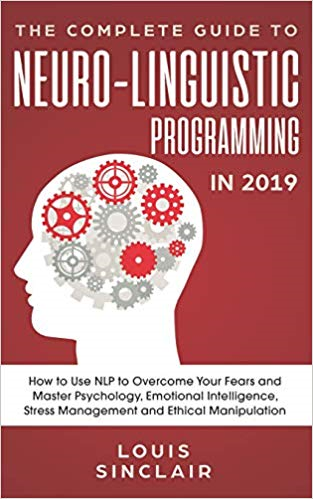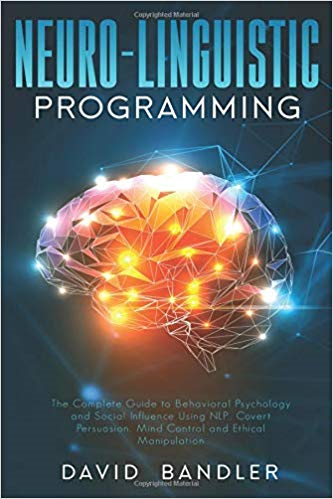Have you ever thought to yourself “man, I should be doing so much more with my life, why can’t I get motivated”? Maybe you spent years developing a skillset only to find that you can’t get yourself to follow through on executing those skills? Perhaps you’ve just invested tens of thousands of dollars in school but can’t get past the mental roadblocks that keep you from succeeding in your chosen field?
If the paragraph above describes you then you might have fallen victim to your brain’s own faulty internal programming. If you’ve spent years thinking negative thoughts about your ability to be successful, then those micro-programs are still running in the background of your mind, controlling your actions without you even being aware.
Think of your brain as a computer program, running many “micro-services” that run in the background. These “micro-services” are designed to run your base level personality traits without any interaction from you, much like your internal organs run without you having to think of them.
The brain’s “micro-services” simply run what you’ve told them to run. They respond to how YOU respond to the world around you. If you’ve spent your life thinking “I’m a failure”, then the brain says “run the failure program” and voila, in the background, unbeknownst to you, your brain is helping you fulfill that prophecy, since that’s what it thinks you want.
That’s where Neuro-Linguistic Programming comes in. Neuro-Linguistic Programming (or “NLP”) aims to re-program your brain so that the auto-pilot “micro-services” can be told to do what you REALLY want them to do.
I was first introduced to NLP from a friend of mine who had been studying to become an NLP instructor. He had reached out to me because we both had a shared interest in self-improvement and had dabbled in different exercises (like meditation) over the years to try to make our brains more effective.
My friend was very excited about NLP, so much so that he contended that it was more effective than meditation for getting real, tangible results. To prove this to me he offered to do some NLP sessions with me.
At the time I was struggling with my jiu jitsu practice, so we thought that would be a good place to start. We identified one specific area that I wanted to fix (namely “guard retention“). We started the session with him talking to me in a manner as to put me into a suggestive state. Once he felt I was in a good place mentally, he had me visualize a grid in my mind, placing the negative feelings of not being able to retain my guard in one square of the grid, and placing a positive visualization of being able to retain guard in another square on the grid. He then instructed me to move the positive image from it’s square, and place it on top of the negative image.
For a week after this session I practiced the same visualization exercise daily, and it payed off. My guard retention did become better, within the week! I had been struggling with it for a month, but was able to get past my mental block in just a few days using the NLP technique that my friend taught me.
I’ve since went on to use this particular technique for other areas of my life, to help with writer’s block, to help with music, and even to help with entrepreneurial ideas.
Of course this is just one of many NLP techniques. NLP gets pretty broad in it’s methods to help people overcome their internal programming. It’s based around trying to understand how you communicate best, and then using that “modality” (or “representational system”) to help you achieve your goals. There are three major modalities in NLP:
- Visual – You understand the world best through visual representations.
- Auditory – Your representation of the world is based more on auditory queues. Auditory people often describe their world with terms like “sounds like” or “clear as a bell”.
- Kinesthetic – You “feel” your way through life. You listen to your intuition or your gut to help you make decisions.
Together these three modalities are known by the acronym “VAK”. I personally am more kinesthetic, so when doing the visualization exercise from above I payed special attention to how I “felt” when I moved the positive image over the negative image. Being aware of your primary modality is supposed to help in re-programming your subconscious mind to run better programs in the background.
Neuro-Linguistic Programming also teaches a concept called “Negative Embedded Commands”. The concept here is that the brain doesn’t like to be told what to do, so if you tell it not to do something that you actually want it to do, then it will do that thing. An example of this in advertising that we see a lot is “Don’t buy my product until you’re sure it suits your needs”. This tricks your brain into wanting to buy it right away since you were told NOT to buy the product.
Which leads me to another important aspect of NLP. NLP can be a useful tool to help you achieve your goals in life. But NLP can also be used by people to sway you into making decisions that you don’t know you’re making. The whole advertising industry is based on the premise of encouraging you to make a decision that is in their interest. Being aware of these NLP techniques in advertising can you help you recognize these tactics so you don’t fall prey to unwanted purchases.
You can learn more about Neuro-Linguistic Programming in the following books:








1 Pingback